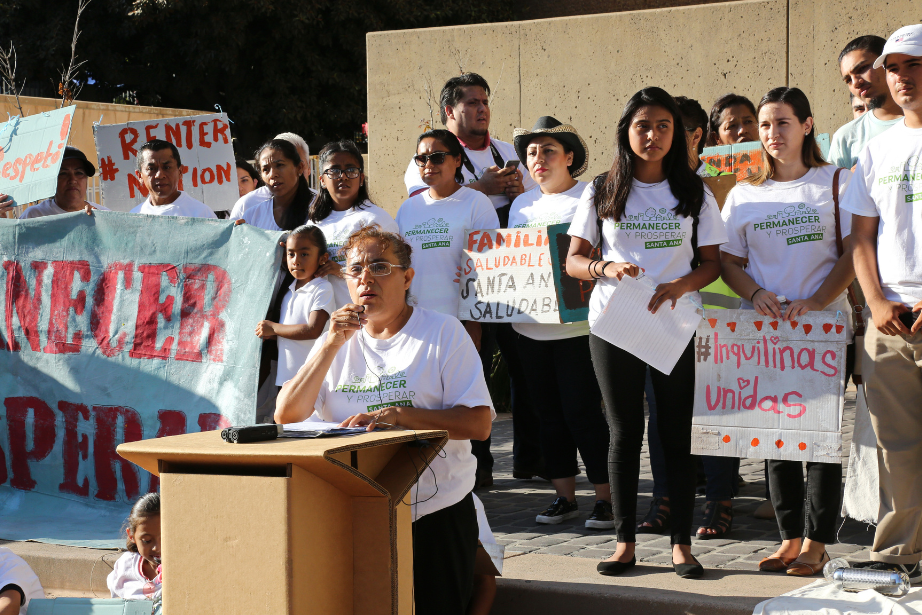Photo used with permission from The California Endowment
This blog, written by Laura Kreeger, offers reflections related to CSSP’s Learning, Equity, and Power (LEaP) series highlighting lessons from The California Endowment’s Building Healthy Communities Initiative. Learn more about LEaP here.
In the Fall of 2021 CSSP hosted a Learning, Equity, and Power (LEaP) Lab titled “A Foundation’s Path to Power Building and Health Equity,” that highlighted lessons from The California Endowment (TCE)’s 10-year Building Healthy Communities (BHC) initiative and featured discussion about why funders need to focus their grantmaking and play a number of roles to advance racial equity. During the Lab, Lauren Padilla-Valverde, who serves as TCE’s Director, Racial Equity Practice & Culture, spoke about the relationship between racial and health equity and the strategic and funding implications for foundations like TCE. Padilla-Valverde made the case that health equity, racial justice, and healing are inextricably linked, and that when foundations fail to explicitly name structural racism as the root cause of health inequities, they prevent the consideration of robust solutions. To achieve lasting, transformative change in communities, she suggested that funders need to listen to community residents to understand the historical context they are working within and make a long-term commitment that is informed, and led by, residents and that centers racial equity.
Funders can learn from the experience of the BHC communities to see examples of what centering racial equity and community power can look like in action. BHC invested and engaged in 14 diverse communities throughout California. One of the communities, East Salinas, had a long history of racialized violence; when BHC began, there had been four police shootings of Latino men within a six-month span. As TCE started to invest and work in East Salinas they learned, through partnership with local community members and activists, that they needed to prioritize racial justice and healing in order to advance health equity in their community. East Salinas BHC helped found the Community Alliance for Racial Equity (CARE), which brought together diverse community stakeholders to create transformational solutions to advance racial equity and justice. The work of East Salinas BHC unfolded in phases, and it began with healing-informed racial equity training for city employees and healing circles for community members.1 As the work has continued, it expanded to include collaborations with stakeholders in philanthropy, city government, and other sectors. The work in the community has evolved to focus on criminal justice and education reform. The work has intentionally been led by and informed by the experiences and insights of those who are most impacted.
While TCE started the BHC initiative focused on goals such as reducing childhood obesity and providing a healthy home for children, through partnering with community residents and advocates in places like East Salinas, they learned they had to shift their priorities to address the root causes of health equity and focus on pressing community concerns. The example of East Salinas BHC shows that funders need to understand the historical context of where they are working, center racial equity from the start, and be led by the community residents. East Salinas resident leaders and organizers knew their community needed racial-justice informed healing. These leaders and organizers pushed BHC to understand that the trauma from the racism and violence their community had experienced for so long needed to be addressed before any other work could be done. BHC has contributed to many historic wins in the East Salinas community that have helped to advance racial and health equity, and they have done so through non-traditional methods.
There are many lessons that came out of TCE’s 10-year BHC initiative. Through the $1.75 billion effort aimed at transforming communities devastated by health inequities, one of the most vital and lasting lessons that TCE learned was the importance of boldly centering racial equity and racial justice from the start of its work. As a result, TCE now advocates for explicit commitments to anti-racism and dismantling White supremacy culture and underscores that this is paramount to building and sharing power with communities and advancing health equity. CSSP’s LEaP series highlights these and other lessons from TCE’s decade-long initiative and gives a glimpse into what it takes to advance equity and power in communities. The field of philanthropy can learn from the experiences of TCE and other foundations that tackle root causes of inequities by working in authentic partnership with the community.
1 Jesús Valenzuela, Rosa González, and Juell Stewart. Monterey County: From Disenfranchisement to Voice, Power, and Participation. Race Forward. 2019. https://www.raceforward.org/system/files/pdf/reports/RaceForward_Monterey_FullReport_2020.pdf
Laura Kreeger is a program and research assistant at Center for the Study of Social Policy.
